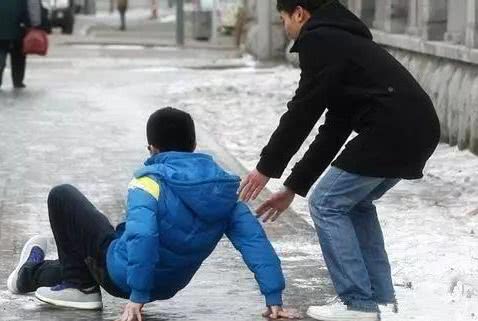Winter is known for its cold weather, which often includes icy conditions. Even if you know that bad weather is coming, you may be at risk for falling because of the snow and ice. On average, approximately sixty people visit the emergency room for falls every day, with many more seeking physiotherapy after minor injuries. Knowing how to handle your slip and fall on ice this winter can help ensure that you get the help you need and that you will heal quickly and effectively.
When to See a Doctor
When you slip and fall on icy sidewalks, your first instinct may be to take care of yourself at home. There are many injuries you can treat at home, but there are also injuries that require you to see a doctor or to go the emergency room. Here’s when you should see a doctor:
Fracture
If you suspect you have a broken bone after falling on ice, it is important to see a doctor right away. You may have a fracture if you experience moderate to severe pain along with swelling and bruising shortly after the fall.
Head Injury
If you suffer a head injury after slipping on ice, it is a good idea to see your doctor or go to the ER right away. Head injuries can be serious, even with minor symptoms, and you may be at risk for a concussion. Seeing a doctor right away can help prevent serious effects of a head injury so you can recover more quickly.
Seizure
If you experience a seizure after falling on ice, you should go to the ER or see a doctor immediately. A seizure is often a sign of something more serious, and it is necessary to get checked out by a doctor before your condition worsens.
Excessive Bleeding
If you fall on icy sidewalks in the winter, you may bleed. This is normal. However, if the bleeding is excessive or does not stop normally as it should, it is time to visit the ER. Excessive bleeding may be a sign of something more serious, including more severe internal injuries, that will need to be checked out right away.
When to See a Physiotherapist
If you slip and fall on the ice, you may have an injury that doesn’t require emergency medical attention but still needs intervention. In these cases, physiotherapy may be a good solution for healing. Here is when you should see a physiotherapist after slipping on ice.
Lower Back Pain
Lower back pain is common in adulthood, especially after injuries. If you fall on the ice and experience lower back pain, a physiotherapist can work with you to help your back heal from the shock of the fall so you can get back to normal functioning.
Elbow Pain
When you fall, you may put an arm down to catch yourself. This can result in injury to your elbow. If you experience elbow pain, physiotherapy can be used to ease your pain and return your arm to full mobility.
Knee Pain
If you fall forward on ice, you may experience knee pain. Like elbow pain, your knee pain may be able to be treated by a physiotherapist. Working with a physiotherapist can ease the pain from the fall and help you return to full mobility and functionality as you recover from the fall.
Muscle Spasms/Swelling
After a fall, you may injure your muscles, which can result in muscle spasms and/or swelling. These injuries may not require immediate medical attention, but a physiotherapist can help you ease the stress on the muscles and help them recover, which would reduce the spasms and swelling in your muscles.
What to Do at Home
Whether you see a doctor or not, there are steps you can take at home to ease your pain and recover from your winter related injury. Here are some things you can do to help.
R.I.C.E. after Injury
“R.I.C.E.” is an acronym that can guide your home treatment. It means:
- Rest
- Ice
- Compression
- Elevation
Following this protocol can help ease your pain and support recovery of your winter related injury.
Traction Aid
If you know areas of your home get slippery in wintry weather, such as freezing rain, a traction aid may be beneficial. Putting down salt after freezing rain or snow will help keep your sidewalk from staying slippery and can help prevent a fall.
Slow Down
Another tip that can help you prevent a visit to the doctor or physiotherapy after an injury is to slow down. You can be safe in icy conditions if you move more slowly and pay attention to the environment.
Wear Protective Gear
Protective gear can also help prevent falls on the ice and injuries from bad weather conditions. For example, winter boots are built to be used in snowy and icy conditions. By using appropriate gear in this weather, you will have the traction and support you need to move in potentially dangerous conditions with a reduced risk of falling.
Whether your fall requires a trip to the ER or physiotherapy, it is important to know the best plan of action after you slip on the ice this winter. Regardless of the severity of your injury, make sure you take care of yourself so you can recover quickly and effectively and get back to full mobility.


